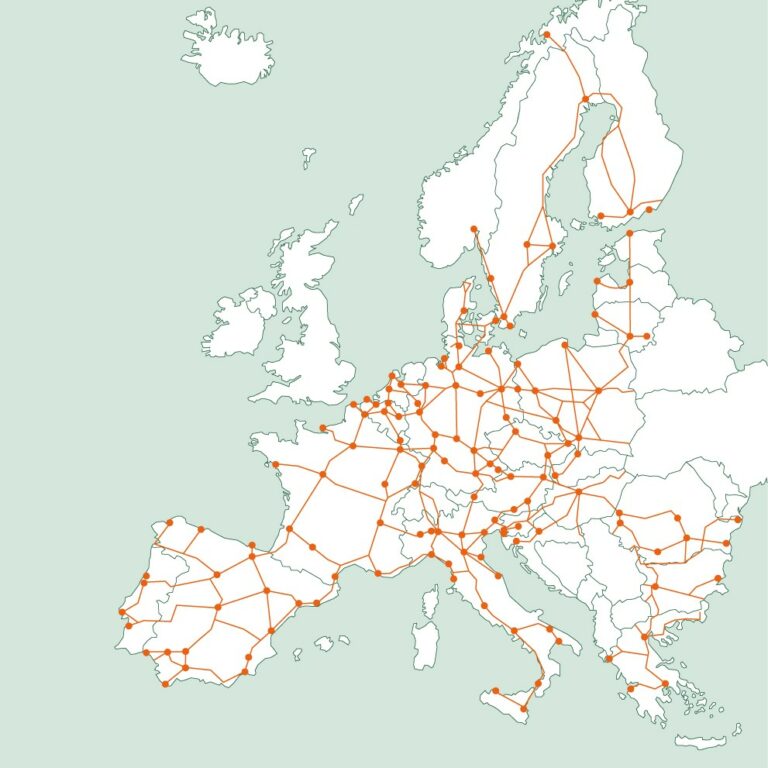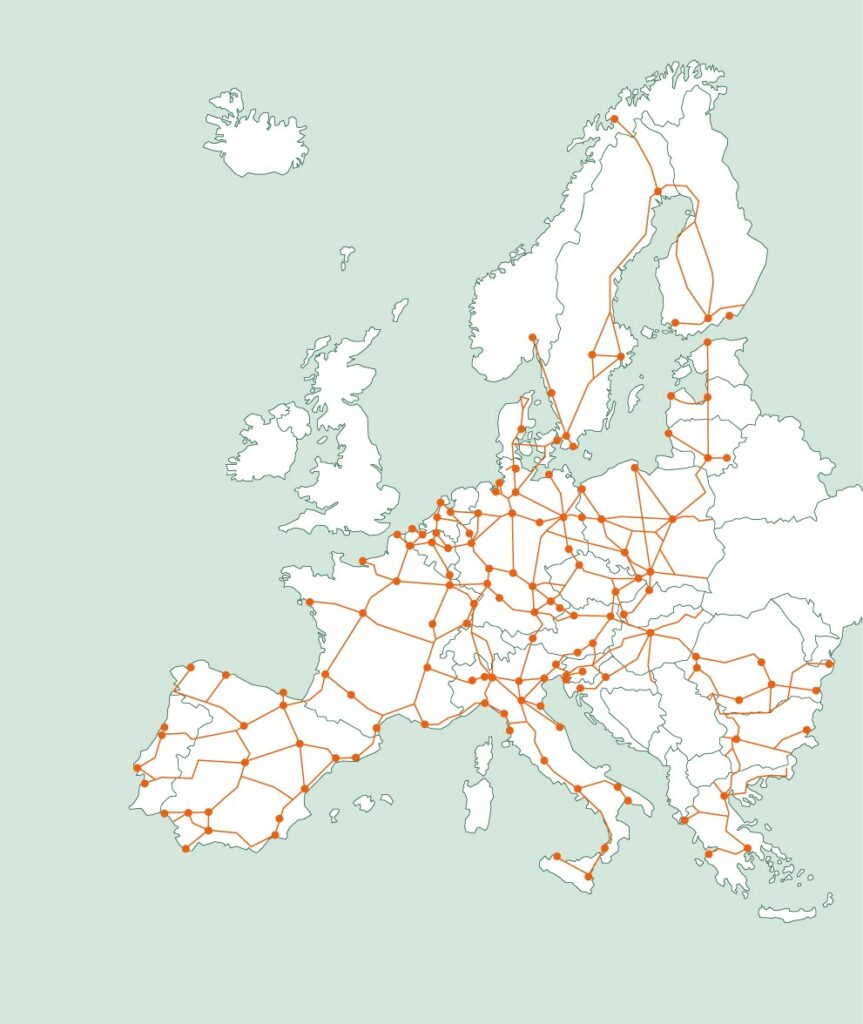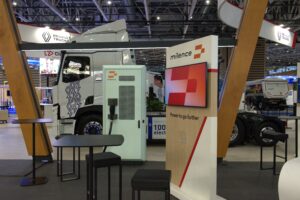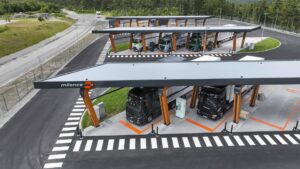Amsterdam, June 5th, 2024 – The EU’s Grid Action Plan demonstrates that nearly €600 billion of grid infrastructure investment will be needed to meet climate change targets by 2030, highlighting the urgent need for infrastructure upgrades. In response to this pressing challenge, Milence has published a comprehensive White Paper outlining key grid strategies to support the rapidly growing market for electrified heavy-duty vehicles (HDVs), demonstrating that future-proofing Europe’s grid is possible.
Addressing the challenge and focusing on the solutions
The transportation sector is undergoing a profound transformation towards sustainability, with the electrification of HDVs playing a key role. However, the rapid deployment of electric HDV charging infrastructure is contingent on a robust and adaptable grid. Milence’s white paper looks at the possible solutions and highlights the urgency for Europe’s grid infrastructure to evolve, ensuring it can support multimegawatt charging sites crucial for HDVs.
Key insights and recommendations
Leveraging nearly two years of collaborative efforts with grid operators, local authorities, and regulators, Milence outlines several key lessons learned translated into recommended actions and invites EU and national policymakers to work with the industry to install improved regulatory solutions to future-proof grid infrastructure:
- Transparency in assessing the site and grid capacity
Charge Point Operators (CPOs) in many EU countries need efficient processes to assess grid capacity, availability of additional power, and costs for securing extra capacity. Evaluating grid capacity is crucial for determining land suitability for heavy-duty truck charging sites. Milence recommends putting in place tools that provide quick access to grid connection details by location, to offer non-binding cost estimates and time constraints for grid connection expansions, including digital maps highlighting “go-to areas” with high or surplus grid capacity. - Streamlining the application process
When Charge Point Operators (CPOs) face insufficient power capacity, they need future-proof grid connections, which require grid reinforcement. To reduce the current complexity, the application process can be improved. A clear application process with an estimated timeline from the initial request to the final ruling is necessary to ensure clarity and accountability. - Proactive grid planning based on market input
To achieve seamless electrification, all actors must proactively identify future investments, especially grid operators who face time and cost constraints. But also input from market stakeholders like HDV CPOs, OEMs, fleet operators, and others are essential for proactive grid planning on the long-term to ensure adequate capacity and avoiding bottlenecks. Reliable scenarios based on current market data and technology assumptions form the foundation for planning grid upgrades, expansion, and other investments. These scenarios should align with political, industrial, and climate objectives. - Revise regulatory frameworks for investments
Current regulatory frameworks often fail to incentivize Distribution System Operators (DSOs) to make anticipatory investments, viewing such investments without clear short-term demand as inefficient. Revised regulatory frameworks which allow Public funding for these crucial investments and encourage timely, adequate investments in grid connection to ensure timely connection applications are key. Especially at strategic parking and anticipated charging hub locations along Trans-European Transport Network (TEN-T) corridors, with EU and national funding support to alleviate potential tariff increases and prevent repeated, costly infrastructure work. - Support renewable energy sources
Battery electric trucks achieve the greatest decarbonization impact when charged with renewable energy from green Power Purchase Agreements (PPAs) or on-site wind or solar generation. Charging hubs, possibly using stationary battery buffers, should meet logistics companies’ demands and connect directly to nearby renewable sites to expedite commissioning. Direct connections to nearby renewable sources, reducing additional infrastructure needs, should be made more convenient. Flexible grid connection requirements would integrate charging hubs with renewable generation, enhancing cost-effectiveness and energy efficiency. - Move towards grid fees based on time and volume
Grid fees for large consumers like truck charging hubs are based on peak demand capacity (kW), which can significantly increase costs compared to volumetric fees (kWh). This structure, designed to encourage efficient grid use, challenges truck charging hubs due to high demand peaks during drivers’ mandated breaks. Flexible, time-varying volumetric tariffs could better accommodate these patterns, ensuring viability during the early market phase and providing clear price signals to customers. This shift would promote efficient energy use, alleviate congestion, and support the operation and investment in high-power charging points, particularly for heavy-duty vehicles.
Pioneering the Future of Heavy-Duty Transport
Milence is committed to leading the charge in electrified HDV infrastructure. By building Europe’s largest public charging network equipped with the latest CCS and pioneering MCS chargers, Milence ensures that charging an electric truck is as seamless and efficient as possible. The integration of high-capacity grid connections, advanced energy management systems, and robust user experience features underscores Milence’s dedication to setting industry benchmarks.
Call to Action
Grid infrastructure development is challenging, but solutions are within reach. This White Paper is a call to action for industry and policy makers to come together and take decisive steps to prepare the European grid for the large-scale electrification of mobility and transport. The recommendations outlined are a starting point in this process and can accelerate the transition to zero-emission heavy-duty vehicles. Collaboration across the HDV charging ecosystem is essential to design and shape regulatory solutions that will future-proof Europe’s grids.




